Building Resilience Through Community-Based Disaster Management
In a world where natural disasters seem to be an ever-present threat, the concept of community-based disaster management (CBDM) has emerged as a beacon of hope. This approach emphasizes the importance of local involvement, empowering communities to take charge of their own preparedness and recovery efforts. Imagine a neighborhood banding together to create strategies tailored to their specific risks, rather than waiting for external aid that may not fully understand their needs. This proactive stance not only enhances resilience but also fosters a deep sense of community belonging.
When we talk about resilience, we refer to the ability of a community to bounce back from disasters. It's not just about surviving; it's about thriving amidst challenges. With CBDM, the focus shifts from a top-down approach to one that values local knowledge and participation. Communities are not merely passive recipients of aid; they are active participants in the entire disaster management process. This shift in perspective can lead to more effective strategies that truly resonate with the unique circumstances of each community.
One of the most significant advantages of community-based disaster management lies in its capacity to harness local knowledge. Communities possess invaluable insights about their environment, vulnerabilities, and resources. These insights can significantly enhance preparedness and response efforts. For instance, local residents might know which areas are prone to flooding or landslides, allowing them to develop targeted strategies to mitigate these risks. By involving community members in the planning process, disaster management becomes more relevant and effective.
Furthermore, CBDM encourages the identification of community vulnerabilities. By assessing risks and understanding the unique challenges faced by their community, residents can prioritize their efforts. This targeted approach ensures that resources are allocated effectively, protecting the most at-risk populations and infrastructure. It’s like a doctor diagnosing a patient: you wouldn’t treat a symptom without understanding the underlying cause. Similarly, communities must identify their vulnerabilities to develop effective strategies.
Engaging diverse stakeholders is another cornerstone of CBDM. When local leaders, organizations, and residents come together, they create a comprehensive understanding of community needs. This collaborative spirit not only fosters trust but also enhances the overall effectiveness of disaster management initiatives. Think of it as a jigsaw puzzle; each piece represents a different stakeholder, and only by working together can the complete picture emerge.
Ultimately, the goal of community-based disaster management is to build a resilient community that can withstand and recover from disasters. This involves not just preparation and response, but also fostering a culture of resilience that permeates every aspect of community life. By investing in training and capacity building, communities can equip their members with the skills necessary to respond effectively when disasters strike.
In conclusion, building resilience through community-based disaster management is not just a strategy; it’s a movement towards empowering communities. By leveraging local knowledge, engaging stakeholders, and fostering collaboration, we can create a world where communities are not just surviving disasters but thriving in their aftermath. As we continue to face the challenges posed by climate change and natural disasters, the importance of CBDM will only grow, reminding us that together, we are stronger.
- What is community-based disaster management?
Community-based disaster management is an approach that emphasizes local participation and empowerment, enabling communities to identify risks and develop strategies tailored to their unique needs. - Why is local knowledge important in disaster management?
Local knowledge is crucial as communities have valuable insights about their environment and vulnerabilities, which can significantly enhance preparedness and response efforts. - How can communities identify their vulnerabilities?
Communities can assess vulnerabilities through techniques such as participatory mapping and surveys, which help prioritize risks and develop targeted strategies. - What role do stakeholders play in disaster management?
Engaging diverse stakeholders ensures a comprehensive understanding of community needs and fosters collaboration in disaster management efforts. - How can technology enhance communication in disaster management?
Technology, such as social media and mobile apps, can enhance communication efforts by enabling real-time information sharing and fostering greater community engagement.

Understanding Community-Based Disaster Management
Community-based disaster management (CBDM) is a proactive approach that emphasizes the importance of local participation and empowerment in the face of disasters. It’s like having a neighborhood watch but for natural calamities. Instead of waiting for external help, communities take charge of their own safety and well-being. This method allows communities to identify their unique risks, develop tailored strategies, and implement solutions that resonate with their specific needs and circumstances.
The essence of CBDM lies in its focus on local knowledge and capacity. Communities often know their landscapes better than anyone else, including the hidden vulnerabilities and the resources available to them. By tapping into this local wisdom, CBDM creates a robust framework for disaster preparedness and recovery, ensuring that plans are not just theoretical but practical and actionable.
One of the standout features of community-based disaster management is its inclusivity. It actively engages various stakeholders, from local leaders and organizations to everyday residents. This collective approach ensures that everyone has a voice in the planning process, fostering a sense of ownership and responsibility. When people feel invested in their community’s safety, they are more likely to participate in preparedness efforts, making the entire community stronger and more resilient.
To illustrate the effectiveness of CBDM, consider the following key components that make it successful:
- Local Empowerment: Communities are encouraged to take the lead in disaster planning and response.
- Tailored Strategies: Solutions are developed based on local needs, rather than one-size-fits-all approaches.
- Collaboration: Diverse stakeholders work together, creating a united front against potential disasters.
In summary, understanding community-based disaster management is crucial for enhancing resilience. By leveraging local knowledge and fostering collaboration, communities can create effective disaster management strategies that not only protect lives and property but also strengthen social ties and promote a culture of preparedness. This approach transforms communities from passive recipients of aid into active participants in their own safety and recovery, making them better equipped to handle whatever challenges may come their way.
Q1: What is community-based disaster management?
A1: Community-based disaster management is an approach that empowers local communities to prepare for, respond to, and recover from disasters by leveraging their own knowledge, resources, and capacities.
Q2: Why is local knowledge important in disaster management?
A2: Local knowledge is vital because communities understand their unique risks, vulnerabilities, and available resources, which can significantly enhance their preparedness and response efforts.
Q3: How can communities engage stakeholders in disaster management?
A3: Communities can engage stakeholders by organizing meetings, workshops, and training sessions that include local leaders, organizations, and residents to ensure diverse perspectives are considered in planning.
Q4: What role does technology play in community-based disaster management?
A4: Technology enhances communication and information sharing among community members and authorities, facilitating real-time updates and improving overall disaster response efforts.

The Importance of Local Knowledge
Local knowledge plays a pivotal role in disaster management, acting as the foundation upon which effective strategies are built. When communities engage in disaster planning, they bring to the table a wealth of insights and experiences that are often overlooked by external agencies. This localized understanding can make all the difference when it comes to preparing for and responding to disasters. Think of it this way: a community knows its own backyard better than anyone else. They understand the lay of the land, the seasonal patterns, and the unique vulnerabilities that may not be evident to outsiders.
One of the most significant advantages of harnessing local knowledge is the ability to identify specific risks that may affect a community. For instance, while one area might be prone to flooding, another might face wildfires or landslides. By tapping into the experiences of local residents, communities can prioritize these risks and develop tailored strategies that address their unique circumstances. This localized approach not only increases the effectiveness of disaster management efforts but also ensures that resources are allocated where they are needed most.
Moreover, local knowledge fosters a sense of ownership among community members. When individuals feel that their insights are valued and incorporated into disaster planning, they are more likely to engage actively in preparedness efforts. This sense of empowerment creates a culture of resilience, where community members are not just passive recipients of information but active participants in their safety and well-being.
Local knowledge can also enhance communication strategies during disasters. Communities often have established networks and informal communication channels that can be leveraged to disseminate critical information quickly. For example, during a natural disaster, word-of-mouth can be an incredibly effective way to spread alerts about evacuation routes or available resources. This grassroots communication can complement official channels, ensuring that everyone stays informed.
To illustrate the importance of local knowledge in disaster management, consider the following table that highlights the differences between external assessments and local insights:
| Aspect | External Assessments | Local Insights |
|---|---|---|
| Understanding of Risks | Generalized data; may overlook specific local hazards | Detailed knowledge of unique vulnerabilities and hazards |
| Resource Identification | Standard resources recommended; may not suit local needs | Identification of local resources, including hidden assets |
| Community Engagement | Top-down approach; limited community involvement | Empowered community participation; fosters ownership |
In conclusion, the importance of local knowledge in community-based disaster management cannot be overstated. It enhances the effectiveness of preparedness efforts, fosters community engagement, and ultimately contributes to building a resilient society capable of withstanding and recovering from disasters. As we move towards a more proactive approach to disaster management, embracing local insights will be key to ensuring that communities are not just prepared but empowered.
- Why is local knowledge important in disaster management? Local knowledge helps identify specific risks and vulnerabilities, ensuring that disaster management strategies are tailored to the community's unique needs.
- How can communities harness local knowledge? Communities can engage residents through workshops, surveys, and discussions to gather insights and experiences related to local hazards.
- What role does community engagement play in disaster preparedness? Community engagement fosters a sense of ownership and responsibility, encouraging individuals to actively participate in preparedness efforts.

Identifying Community Vulnerabilities
Identifying community vulnerabilities is a critical step in the journey toward effective disaster management. It’s not just about knowing what could go wrong; it’s about understanding the unique fabric of the community itself. Each community has its own set of strengths and weaknesses, shaped by its geography, demographics, and social dynamics. By taking a closer look at these factors, communities can prioritize their risks and develop targeted strategies that ensure resources are allocated where they are needed most.
When we talk about vulnerabilities, we’re referring to a range of elements that can be affected by disasters. These might include physical structures like homes and schools, social networks that provide support, and even economic systems that help families thrive. For instance, consider a small coastal town that faces the threat of hurricanes. The community might identify its vulnerable areas as:
- Low-lying neighborhoods prone to flooding
- Local businesses that lack disaster recovery plans
- Schools that are not built to withstand high winds
By pinpointing these vulnerabilities, the community can focus on strengthening its defenses. This could involve retrofitting buildings to be more resilient, establishing emergency funds for local businesses, or creating safe spaces in schools that can serve as shelters during storms. It’s essential to engage community members in this process, as they often have the best insights into their own needs and challenges.
Moreover, assessing vulnerabilities isn’t a one-time task. It requires ongoing evaluation and adaptation. As communities grow and change, so too do their risks. Regularly updating vulnerability assessments helps ensure that strategies remain relevant and effective. This can be achieved through:
| Assessment Method | Description |
|---|---|
| Participatory Mapping | Involves community members in creating visual representations of hazards and resources. |
| Surveys | Collect data on community perceptions of risks and available resources. |
| Focus Groups | Gather insights from diverse community members to understand different perspectives on vulnerabilities. |
By utilizing these assessment methods, communities can cultivate a deeper understanding of their unique disaster landscape. This knowledge empowers them to develop proactive strategies, ensuring that they are not just reacting to disasters, but actively preparing for them. In essence, identifying vulnerabilities is about fostering a culture of resilience, where communities are equipped to face challenges head-on and emerge stronger.
- What are community vulnerabilities? Community vulnerabilities refer to the weaknesses within a community that can be exacerbated by disasters, including physical, social, and economic factors.
- Why is it important to identify these vulnerabilities? Identifying vulnerabilities allows communities to prioritize risks and allocate resources effectively, enhancing preparedness and response efforts.
- How can communities assess their vulnerabilities? Communities can use methods such as participatory mapping, surveys, and focus groups to gather insights and data about their risks.
- Is vulnerability assessment a one-time process? No, it should be an ongoing process to adapt to changes within the community and its environment.

Risk Assessment Techniques
When it comes to disaster management, understanding the risks your community faces is like having a roadmap in uncharted territory. are essential tools that help communities identify hazards, evaluate vulnerabilities, and prioritize their responses. These techniques are not just academic exercises; they are practical methods that empower local populations to take charge of their safety and preparedness.
One of the most effective methods is participatory mapping. This technique involves community members coming together to create visual representations of their local environment, highlighting areas that are at risk. Imagine a group of neighbors gathering around a large map, marking flood zones, landslide-prone areas, or locations of critical infrastructure. This not only fosters a sense of ownership but also ensures that the insights gathered are rooted in local knowledge, which is often overlooked in top-down approaches.
Another valuable technique is conducting surveys. Surveys can gather qualitative and quantitative data about community perceptions of risk, past disaster experiences, and local resources. By distributing questionnaires, either online or in person, communities can capture a wide array of opinions and experiences. This data can then be analyzed to identify common concerns and areas that require immediate attention. For instance, a survey might reveal that a significant portion of the community is unaware of the evacuation routes in case of a flood, highlighting a critical gap in preparedness.
To further enhance understanding, communities can employ focus group discussions. These discussions allow for deeper exploration of specific issues, where participants can share their stories and insights. It's like sitting around a campfire, sharing experiences, and learning from one another. Such gatherings can uncover hidden vulnerabilities and generate ideas for community-led solutions.
Additionally, utilizing historical data analysis can provide insights into past disasters and their impacts. By studying previous events, communities can identify patterns and trends that can inform future preparedness efforts. For example, if a community has experienced multiple wildfires in the past decade, they can prioritize fire prevention strategies and community education programs.
Incorporating these risk assessment techniques creates a comprehensive understanding of the community’s unique disaster landscape. It allows for a tailored approach to disaster management, ensuring that resources are allocated effectively and that the most vulnerable populations are prioritized. In essence, these techniques transform communities into proactive agents of change, ready to face challenges head-on.
| Risk Assessment Technique | Description | Benefits |
|---|---|---|
| Participatory Mapping | Community members create maps to identify hazards and resources. | Empowers locals, fosters collaboration, and utilizes local knowledge. |
| Surveys | Gathering data on community perceptions and past experiences. | Identifies gaps in preparedness and highlights community concerns. |
| Focus Group Discussions | In-depth discussions to explore specific issues and experiences. | Encourages sharing of insights and generates community-led solutions. |
| Historical Data Analysis | Reviewing past disaster events to identify patterns. | Informs future preparedness efforts and resource allocation. |

Engaging Community Stakeholders
Engaging community stakeholders is a fundamental aspect of community-based disaster management that cannot be overlooked. When we talk about stakeholders, we're not just referring to local government officials or emergency services; we’re including a diverse array of individuals and organizations that play a vital role in disaster preparedness and recovery. Think of it as a team sport—everyone has a position to play, and when they work together, the outcome is often more successful. By fostering collaboration among these stakeholders, communities can create a more robust framework for managing disasters.
One of the key benefits of engaging stakeholders is the wealth of knowledge they bring to the table. Local leaders, non-profit organizations, and even residents have unique insights into the community’s strengths and vulnerabilities. They can help identify specific risks and develop tailored strategies that resonate with the community’s needs. For instance, a local farmer might understand the seasonal patterns that could lead to flooding, while a nearby school could serve as a shelter during emergencies. Together, their combined knowledge can lead to more effective disaster management plans.
Moreover, engaging stakeholders fosters a sense of ownership and accountability within the community. When people feel like they have a say in the decision-making process, they are more likely to be invested in the outcomes. This can be achieved through community meetings, workshops, and collaborative planning sessions. These forums not only allow for the sharing of ideas but also help build trust among community members and leaders. Trust is crucial; it's like the glue that holds the community together during challenging times.
To effectively engage stakeholders, communities can employ various strategies. Here are some methods that can be used:
- Community Workshops: Hosting interactive sessions where stakeholders can brainstorm and share ideas helps in building a collective vision.
- Partnerships with Local Organizations: Collaborating with NGOs and local businesses can amplify resources and expertise.
- Regular Communication: Keeping stakeholders informed through newsletters or social media updates ensures everyone stays in the loop.
In addition, it’s important to recognize and celebrate the contributions of stakeholders. Acknowledgment can take many forms, from public recognition at community events to incorporating their feedback into disaster management plans. This not only motivates stakeholders to remain engaged but also encourages others to get involved, creating a ripple effect of community participation.
In conclusion, engaging community stakeholders is not just a box to check off; it’s an ongoing process that builds a resilient community. By harnessing local knowledge, fostering collaboration, and maintaining open lines of communication, communities can enhance their disaster management efforts significantly. It's about creating a culture of preparedness where everyone plays a part, and together, they can weather any storm.
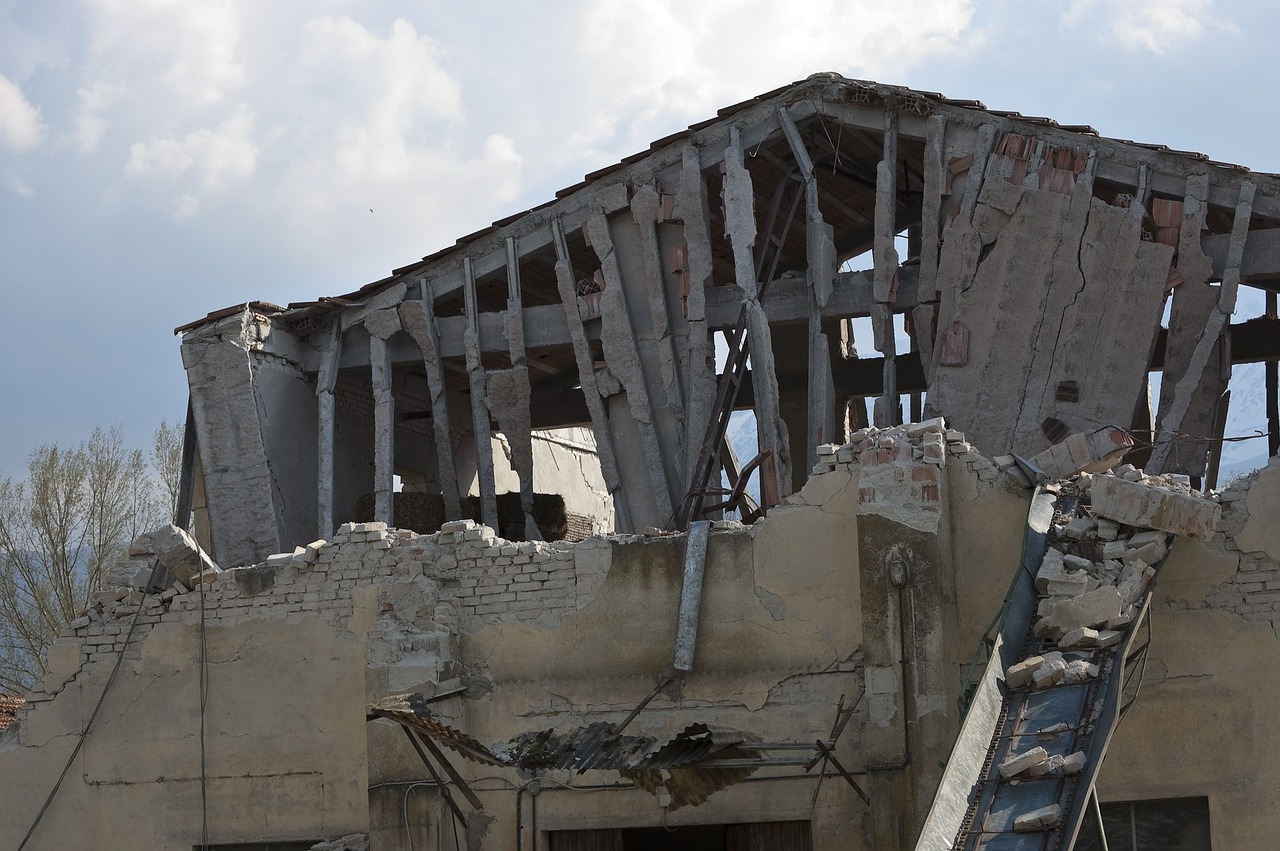
Building Capacity through Training
When it comes to disaster management, one of the most effective ways to enhance a community's resilience is through training. Imagine a well-prepared community, where each member is equipped with the knowledge and skills to respond effectively when disaster strikes. This isn’t just a dream; it can be a reality through structured training programs. Training empowers individuals, enabling them to take charge of their safety and that of their neighbors. It transforms passive observers into active participants, ready to tackle challenges head-on.
Training can take many forms, from workshops and simulations to hands-on drills. Each method serves a unique purpose, but all aim to build a solid foundation of skills. For instance, workshops can cover essential topics such as first aid, emergency response protocols, and resource management. On the other hand, simulations can provide real-life scenarios that allow participants to practice their skills in a controlled environment. This blend of theory and practice ensures that community members are not just aware of what to do but are also confident in their ability to act.
Moreover, training should be inclusive, reaching out to various segments of the community. This includes not only local leaders and emergency responders but also everyday citizens, schools, and vulnerable populations. By doing so, we create a network of informed individuals who can support each other during crises. For example, if a natural disaster occurs, a trained neighbor can assist others who may need help, ensuring that no one is left behind. This sense of community and mutual aid is invaluable when facing the uncertainties of disasters.
To ensure the effectiveness of training programs, it is essential to consider the following key elements:
- Needs Assessment: Understanding the specific needs of the community helps tailor training programs to address real vulnerabilities.
- Continuous Learning: Disaster management is an evolving field. Regular updates and refresher courses keep skills sharp and knowledge current.
- Collaboration: Partnering with local organizations and experts can enhance the quality of training and provide additional resources.
In essence, building capacity through training is not just about imparting knowledge; it’s about fostering a culture of preparedness. When community members feel empowered, they are more likely to engage in proactive measures, creating a ripple effect of resilience throughout the entire community. After all, in the face of disaster, it’s the collective strength of informed individuals that can make all the difference.
Q: What types of training should communities focus on?
A: Communities should focus on a variety of training options, including first aid, emergency response protocols, and hazard identification. Tailoring these programs to address specific local risks is crucial.
Q: How can communities ensure participation in training programs?
A: Engaging local leaders and organizations can help promote training programs. Additionally, making training accessible and relevant to the community's needs encourages participation.
Q: Is training a one-time event?
A: No, training should be an ongoing process. Regular updates and refresher courses are essential to keep community members informed and prepared for potential disasters.
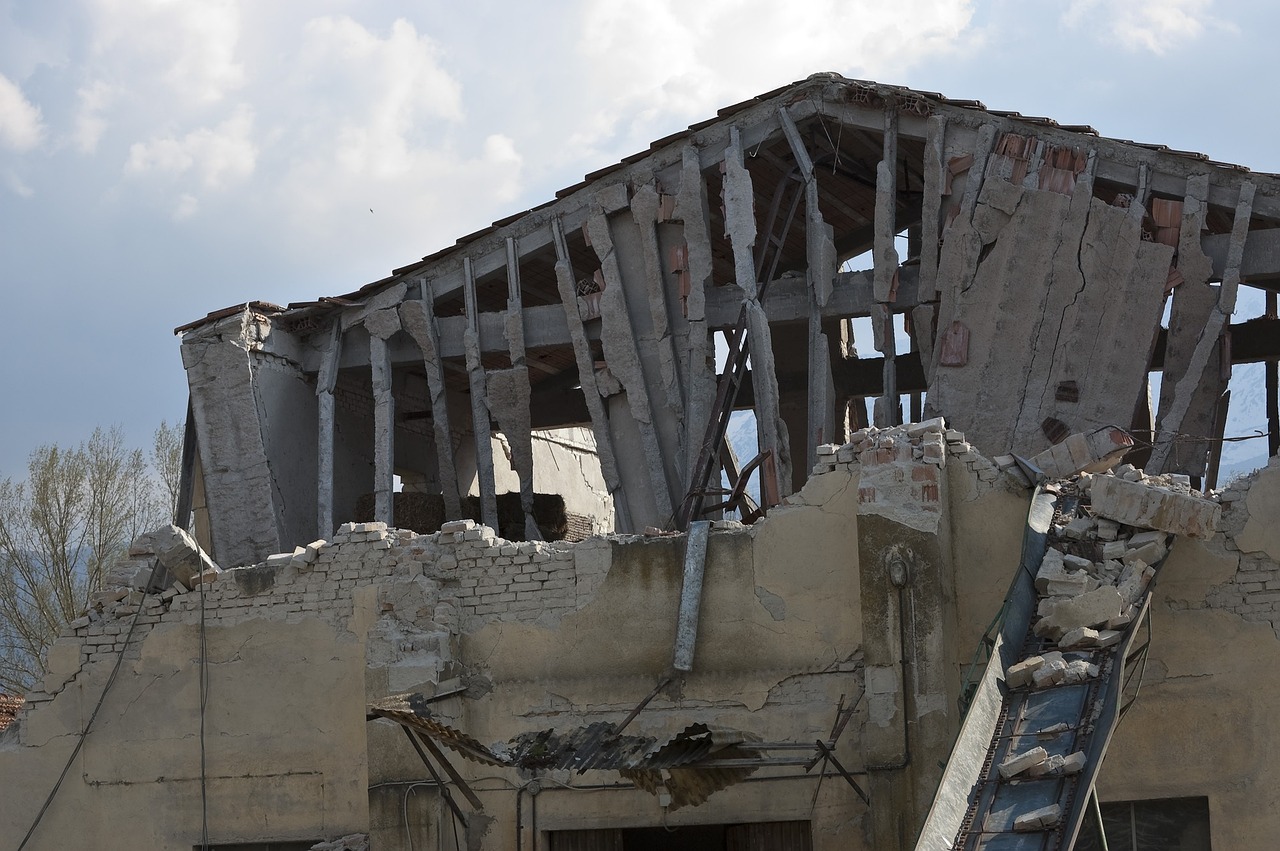
Creating Effective Communication Strategies
Effective communication is the backbone of successful disaster management. Imagine a scenario where a community is struck by a natural disaster, and the flow of information is disrupted. Chaos ensues, and people are left in the dark, unsure of what to do or where to go. This is why establishing robust communication strategies is vital. It ensures that vital information flows seamlessly among community members, local authorities, and emergency services throughout the different phases of disaster management—preparation, response, and recovery.
One of the key elements in crafting these strategies is to identify the various channels through which communication can occur. Traditional methods, such as community meetings and printed flyers, are still effective, but in our digital age, we must also embrace modern technology. Social media platforms, community apps, and text messaging services can serve as rapid-response tools to disseminate information quickly and efficiently. For instance, during an emergency, a simple tweet or text alert can reach hundreds of people within seconds, providing them with critical updates.
Moreover, it's essential to consider the diverse demographics within a community. Different groups may have varying communication preferences and needs. For example, elderly residents may prefer phone calls or face-to-face communication, while younger individuals might engage more through social media. Therefore, a multi-channel approach is paramount. By utilizing a variety of communication methods, communities can ensure that no one is left out. Here’s a quick breakdown of effective communication channels:
- Social Media: Platforms like Facebook and Twitter can be used for real-time updates.
- Mobile Apps: Community-specific apps can provide alerts and resources.
- SMS Alerts: Text messages can reach individuals without internet access.
- Community Meetings: Regular gatherings can keep everyone informed and engaged.
In addition to choosing the right channels, establishing a clear and consistent message is crucial. This means that all stakeholders—whether they are local leaders, emergency responders, or community members—should be on the same page regarding the information being shared. Conflicting messages can lead to confusion and mistrust. Therefore, training sessions can be beneficial to ensure that everyone understands the communication protocols and knows how to relay information accurately.
Another vital aspect of effective communication is feedback. After a disaster, communities should actively seek input from residents about the effectiveness of the communication strategies used. This feedback loop not only helps in refining future communication efforts but also empowers community members, making them feel valued and involved in the process. By asking questions like, "What worked well?" or "What could we improve?" communities can adapt and enhance their disaster management strategies.
To summarize, creating effective communication strategies in disaster management involves:
- Identifying diverse communication channels.
- Ensuring consistency in messaging.
- Training stakeholders on communication protocols.
- Encouraging feedback to improve future efforts.
Incorporating these elements will not only enhance the community's preparedness but also foster a sense of unity and resilience among its members. When everyone is informed and engaged, the community can respond to disasters more effectively, ensuring that lives and properties are better protected.
Q: Why is communication important in disaster management?
A: Communication is crucial as it ensures that all community members receive timely and accurate information, which can significantly impact their safety and response efforts during a disaster.
Q: What are some effective communication channels for disaster management?
A: Effective channels include social media, mobile apps, SMS alerts, community meetings, and traditional media like radio and newspapers.
Q: How can communities ensure their communication strategies reach everyone?
A: By utilizing a multi-channel approach and considering the diverse communication preferences of different demographic groups within the community.
Q: What role does feedback play in improving communication strategies?
A: Feedback helps communities assess the effectiveness of their communication efforts and make necessary adjustments for future disaster management initiatives.
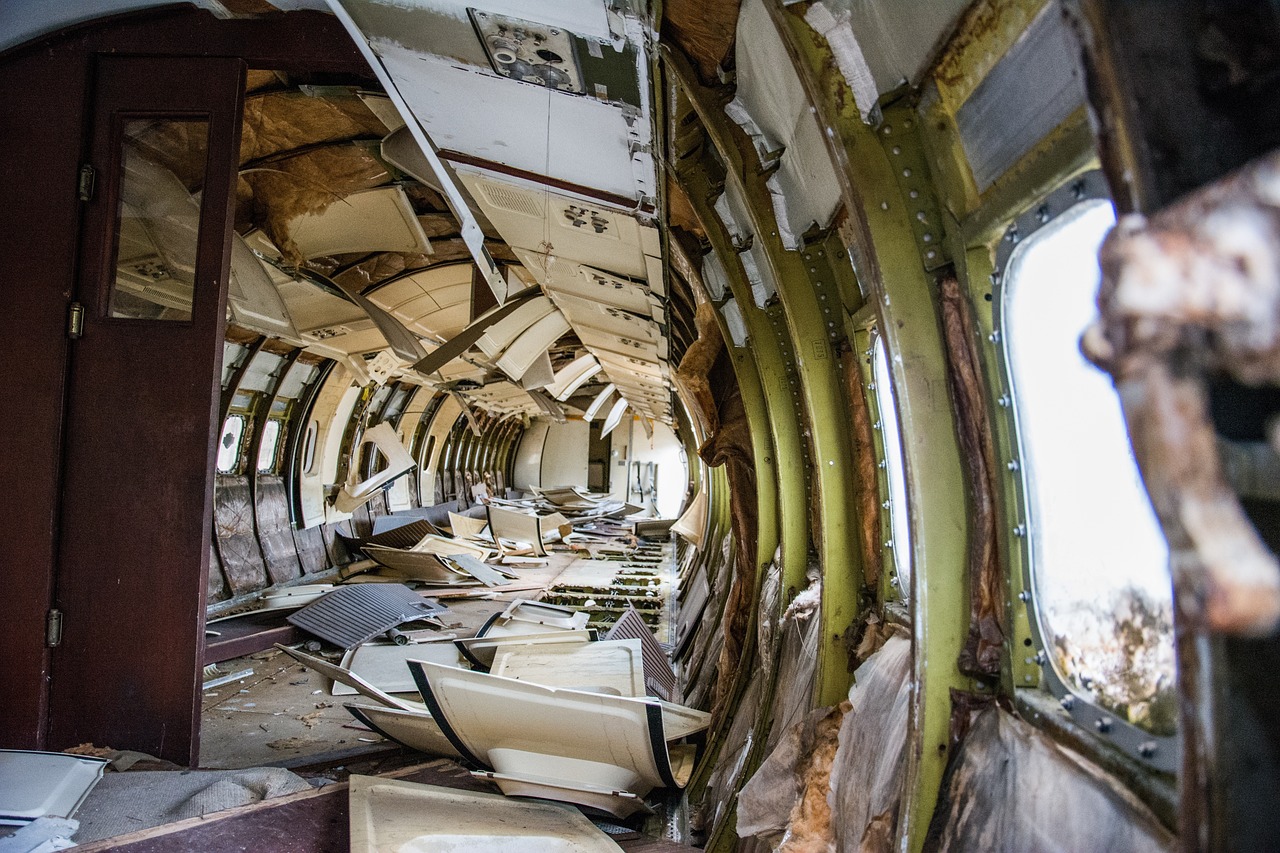
Utilizing Technology for Communication
In today's fast-paced world, leveraging technology for communication has become more crucial than ever, especially in the realm of disaster management. Imagine a community where information flows as swiftly as the wind, allowing residents to stay informed and prepared for any unforeseen events. Technology can serve as the lifeline that connects individuals, local authorities, and emergency services, ensuring that everyone is on the same page during critical times.
One of the most effective ways technology enhances communication is through the use of social media platforms. These platforms allow for real-time updates and alerts, making it easier for community members to share vital information. For instance, if a storm is approaching, local authorities can quickly post updates on platforms like Twitter or Facebook, reaching thousands in a matter of seconds. This immediacy can be the difference between safety and disaster.
Moreover, the rise of mobile applications dedicated to emergency alerts is a game-changer. These apps can provide personalized notifications based on a user’s location, ensuring that residents receive timely information tailored to their specific needs. For example, a community might utilize an app that notifies users of evacuation routes, shelter locations, and safety tips during a disaster. Such tools not only empower individuals but also foster a sense of community as people share their experiences and tips through these channels.
In addition to social media and mobile apps, establishing a robust community communication network is essential. This can include local radio stations, community bulletin boards, and even text alert systems. By diversifying communication channels, communities can reach a broader audience, including those who may not have access to the internet. For instance, a simple text message alert can inform residents of a sudden weather change, ensuring that no one is left in the dark.
Furthermore, technology can facilitate training and simulations to prepare communities for disasters. Virtual reality (VR) and augmented reality (AR) can be employed to create realistic disaster scenarios, allowing community members to practice their responses in a safe environment. Such innovative approaches not only build confidence but also enhance overall preparedness by familiarizing individuals with the steps they need to take when disaster strikes.
In conclusion, utilizing technology for communication in disaster management is not just about having the latest gadgets or apps; it's about creating a connected community that can respond effectively to emergencies. By embracing these technological advancements, communities can ensure that they are not only prepared for disasters but also resilient in the face of them. After all, in times of crisis, it's the strength of our connections that will guide us through.
- How can social media improve disaster communication? Social media provides real-time updates and allows for quick dissemination of important information to a wide audience.
- What role do mobile apps play in disaster preparedness? Mobile apps can deliver personalized alerts and vital information based on a user's location, enhancing individual readiness.
- Why is it important to have multiple communication channels? Different channels ensure that all community members receive critical information, including those without internet access.
- How can technology aid in community training for disasters? Virtual and augmented reality can simulate disaster situations, allowing community members to practice their responses safely.
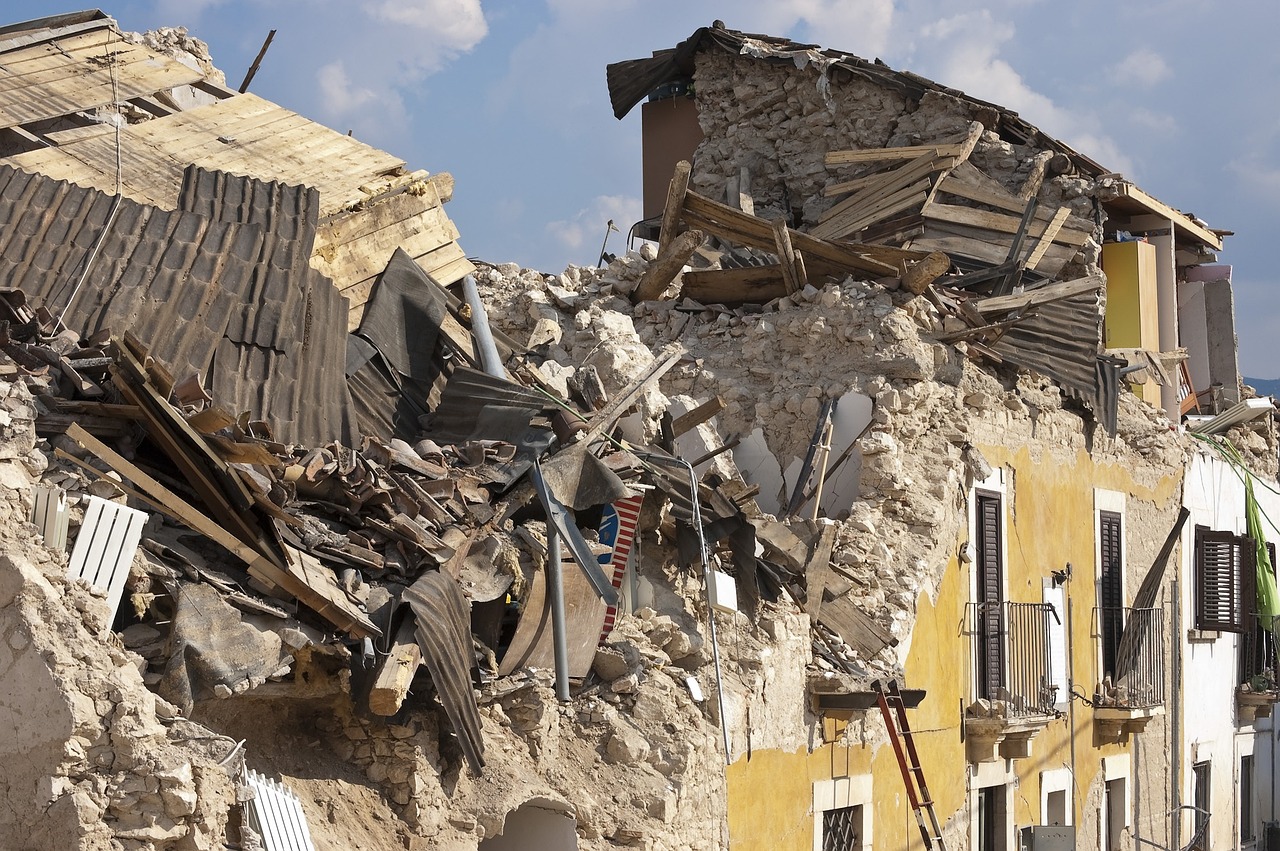
Establishing Early Warning Systems
This article explores how community-based disaster management enhances resilience, focusing on strategies, benefits, and the roles of various stakeholders in fostering a proactive approach to disaster preparedness and recovery.
Community-based disaster management emphasizes local participation and empowerment, enabling communities to identify risks, develop strategies, and implement solutions tailored to their unique needs and circumstances.
Harnessing local knowledge is crucial in disaster management, as communities possess valuable insights about their environment, vulnerabilities, and resources that can significantly enhance preparedness and response efforts.
Assessing vulnerabilities helps communities prioritize risks and develop targeted strategies, ensuring that resources are allocated effectively to protect the most at-risk populations and infrastructure.
Various risk assessment techniques, such as participatory mapping and surveys, enable communities to identify hazards and vulnerabilities, fostering a deeper understanding of their unique disaster landscape.
Engaging diverse stakeholders, including local leaders, organizations, and residents, ensures a comprehensive understanding of community needs and fosters collaboration in disaster management efforts.
Training community members in disaster preparedness and response strengthens local capacity, equipping them with the skills and knowledge necessary to effectively manage disasters when they occur.
Effective communication is vital in disaster management, ensuring that information flows seamlessly among community members, local authorities, and emergency services during preparedness, response, and recovery phases.
Leveraging technology, such as social media and mobile apps, enhances communication efforts, enabling real-time information sharing and fostering greater community engagement in disaster management initiatives.
Early warning systems are the backbone of disaster preparedness, acting as a crucial lifeline that can save lives and mitigate damage. By providing timely alerts about impending hazards, these systems empower communities to take proactive measures. Imagine a storm brewing on the horizon; without an early warning system, communities might be caught off guard, leading to chaos and confusion. However, with effective early warning protocols in place, people can evacuate, secure their properties, and ensure their loved ones are safe.
To establish an effective early warning system, several key components must be integrated:
- Data Collection: Gathering accurate and timely data on potential hazards such as floods, earthquakes, or hurricanes is essential.
- Risk Assessment: Understanding the specific vulnerabilities of the community helps tailor the warning system to their unique needs.
- Communication Channels: Utilizing multiple channels—such as SMS alerts, social media, and community radio—ensures that information reaches everyone, especially those in remote areas.
- Community Training: Educating residents on how to respond to alerts and the importance of early warnings fosters a culture of preparedness.
Moreover, collaboration with local meteorological services and emergency management agencies is vital. These partnerships not only enhance the reliability of the information but also strengthen the community's response capabilities. When everyone is on the same page, the impact of disasters can be significantly reduced.
In conclusion, establishing early warning systems is not just about technology; it’s about creating a culture of preparedness and resilience within the community. By investing in these systems, communities can turn fear into action, ensuring that they are ready to face any challenge that comes their way.
Building resilience involves strengthening social networks, enhancing economic stability, and promoting mental well-being, enabling communities to recover more effectively from disasters and adapt to future challenges.
Social cohesion fosters collaboration and support among community members, enhancing collective resilience and ensuring that individuals are better prepared to respond to and recover from disasters.
Sustainable recovery plans focus on long-term resilience, emphasizing the importance of rebuilding communities in ways that address underlying vulnerabilities and promote future preparedness.
Q1: What is the main goal of community-based disaster management?
A: The main goal is to empower local communities to identify risks and develop tailored strategies for disaster preparedness and recovery.
Q2: How can technology improve early warning systems?
A: Technology can facilitate real-time information sharing, ensuring that alerts reach everyone quickly and efficiently.
Q3: Why is local knowledge important in disaster management?
A: Local knowledge provides insights into specific vulnerabilities and resources, enhancing the effectiveness of disaster response efforts.

Fostering Community Resilience
Building community resilience is not just about bouncing back from disasters; it's about bouncing forward. Imagine a rubber band: when stretched, it can snap back to its original shape, but if it's too stretched too often, it can lose its elasticity. Similarly, communities need to cultivate strength and flexibility to face challenges head-on. Resilience involves a multifaceted approach, focusing on enhancing social networks, economic stability, and mental well-being. By fostering these elements, communities can not only recover more effectively from disasters but also adapt to future challenges with greater ease.
One of the cornerstones of resilience is social cohesion. When community members come together, they create a support system that can withstand the pressures of a disaster. Think of it as a safety net: the stronger the net, the less likely individuals are to fall through the cracks during tough times. Social cohesion encourages collaboration and mutual aid, making it easier for people to share resources, information, and emotional support. This sense of unity is vital, especially in the aftermath of a disaster when individuals may feel isolated and vulnerable.
In addition to social networks, economic stability plays a crucial role in resilience. Communities that are economically robust are better equipped to recover from disasters. This means not just having a variety of job opportunities, but also fostering local businesses that can provide essential goods and services during times of need. By supporting local economies, communities can create a self-sustaining environment that reduces dependence on external aid. For instance, investing in local agriculture can ensure food security, while encouraging small businesses can keep the economy flowing even in challenging times.
Moreover, mental well-being cannot be overlooked in the quest for resilience. Disasters can take a significant toll on mental health, leading to increased anxiety, depression, and post-traumatic stress. Communities that prioritize mental health support—through counseling services, community programs, and open dialogues—can help individuals process their experiences and rebuild their lives. A community that is mentally strong is one that can face adversity with courage and determination.
To truly foster resilience, communities should also focus on sustainable recovery plans. These plans should not only address immediate needs but also lay the groundwork for long-term resilience. This involves rebuilding infrastructure in a way that mitigates future risks, such as using flood-resistant materials in areas prone to flooding or creating green spaces that can absorb excess rainwater. By considering the long-term implications of recovery efforts, communities can ensure that they are not just repairing what was lost but are also preparing for the future.
In summary, fostering community resilience is an ongoing journey that requires collaboration, investment, and a commitment to holistic well-being. By strengthening social networks, enhancing economic stability, promoting mental health, and developing sustainable recovery plans, communities can create a robust framework that not only withstands disasters but thrives in the face of them. After all, resilience is not just about surviving; it’s about thriving in the aftermath of adversity.
- What is community resilience? Community resilience refers to the ability of a community to prepare for, respond to, and recover from disasters while adapting to future challenges.
- How can social cohesion be strengthened? Social cohesion can be enhanced through community events, support groups, and initiatives that encourage collaboration among residents.
- Why is mental health important in disaster management? Mental health plays a crucial role in helping individuals cope with the aftermath of disasters, reducing anxiety and promoting recovery.
- What are sustainable recovery plans? Sustainable recovery plans focus on rebuilding communities in ways that address vulnerabilities and promote long-term resilience, rather than just immediate fixes.

Promoting Social Cohesion
In times of crisis, the strength of a community is often measured by its ability to come together and support one another. is essential for building resilience in the face of disasters. When community members feel connected and engaged, they are more likely to collaborate effectively during emergencies, share vital resources, and provide emotional support to each other. Imagine a tightly knit fabric; when one thread is pulled, the entire structure holds firm because of the interconnections. This analogy highlights the importance of social ties in disaster management.
One of the most impactful ways to foster social cohesion is through community engagement initiatives. These can include organizing local events, workshops, and training sessions that encourage participation from all segments of the population. By involving diverse groups, from youth to the elderly, communities can harness a wide array of skills and perspectives. For instance, a community might host a disaster preparedness fair where residents can learn about emergency plans, share their experiences, and develop personal connections with their neighbors. Such activities not only build knowledge but also strengthen the bonds between individuals, creating a sense of belonging and mutual support.
Moreover, creating platforms for dialogue and communication is crucial. Establishing regular community meetings can provide a space for residents to voice their concerns, share ideas, and collaboratively develop solutions to local challenges. These meetings can serve as a foundation for trust and transparency, allowing community members to feel heard and valued. When people believe their input matters, they are more likely to engage actively in disaster preparedness and recovery efforts.
It's also essential to recognize and celebrate the cultural diversity within communities. Embracing different traditions, languages, and customs can enrich the social fabric and promote inclusivity. For example, organizing multicultural festivals or events can help bridge gaps between various groups and foster understanding. By celebrating what makes each community member unique, social cohesion is naturally enhanced, leading to a more resilient community.
In essence, promoting social cohesion is not just about building relationships; it’s about creating a resilient network that can withstand the shocks of disaster. When individuals feel they are part of a supportive community, they are more likely to engage in proactive measures, share critical information during crises, and come together to recover more effectively. The result? A community that not only survives disasters but thrives in their aftermath.
- What is social cohesion?
Social cohesion refers to the bonds that connect members of a community, fostering a sense of belonging and mutual support. - How does social cohesion help during disasters?
It enhances collaboration, resource sharing, and emotional support, allowing communities to respond and recover more effectively. - What are some ways to promote social cohesion?
Community events, regular meetings, and celebrating cultural diversity are effective strategies. - Why is diversity important in community resilience?
Diversity enriches perspectives and solutions, making communities more adaptable and innovative in facing challenges.
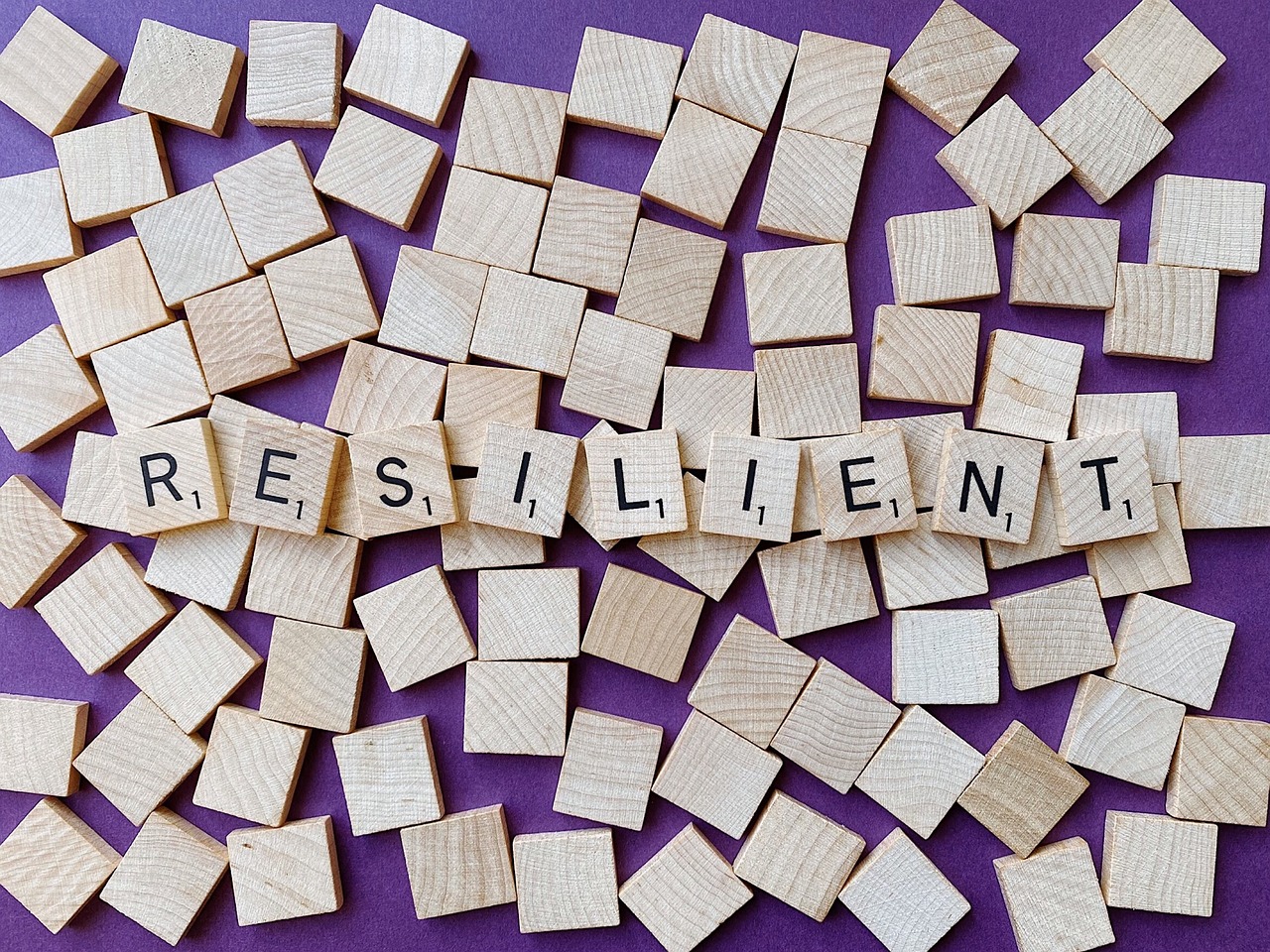
Developing Sustainable Recovery Plans
When it comes to disaster recovery, the focus should not just be on bouncing back but rather on bouncing forward. This means that developing sustainable recovery plans is essential for ensuring that communities not only recover from disasters but also emerge stronger and more resilient. A sustainable recovery plan encompasses a comprehensive strategy that addresses not only immediate needs but also long-term goals, fostering a proactive approach to future challenges.
One of the key elements in creating these plans is involving community members in the decision-making process. By doing so, we tap into the rich tapestry of local knowledge and experiences that can guide recovery efforts. Community involvement ensures that the recovery strategies are relevant and tailored to the specific needs and vulnerabilities of the population. This participatory approach can transform individuals into active stakeholders in their recovery journey, leading to more effective and accepted outcomes.
Moreover, sustainable recovery plans should prioritize environmental considerations. Incorporating green infrastructure, such as parks and green roofs, can mitigate the impacts of future disasters while enhancing community well-being. For example, areas that integrate natural solutions, like wetlands for flood control, not only protect against hazards but also promote biodiversity and improve air quality. This dual benefit is a cornerstone of sustainability.
Another crucial aspect is the economic resilience of the community. Recovery plans should include strategies that support local businesses and create job opportunities. This can be achieved through initiatives such as:
- Providing grants and low-interest loans to small businesses affected by disasters.
- Investing in training programs that equip the workforce with skills needed for emerging industries.
- Encouraging local sourcing of materials and services to stimulate the economy.
Additionally, mental health support must be integrated into recovery plans. Disasters can take a significant psychological toll on individuals, and addressing these needs is vital for holistic recovery. Establishing community support groups and providing access to mental health professionals can foster an environment where individuals feel supported and understood.
Finally, it is essential to incorporate monitoring and evaluation mechanisms into recovery plans. This ensures that the strategies implemented are effective and allows for adjustments as needed. Regular assessments help communities learn from their experiences, making them better prepared for future disasters. By creating a feedback loop, communities can continuously improve their resilience, ensuring that they are not just surviving but thriving.
- What is the purpose of a sustainable recovery plan?
A sustainable recovery plan aims to ensure that communities not only recover from disasters but also enhance their resilience against future challenges. - How can community involvement impact recovery efforts?
Community involvement ensures that recovery strategies are relevant and tailored to the specific needs of the population, leading to more effective outcomes. - Why is mental health support important in recovery plans?
Mental health support addresses the psychological toll disasters can take on individuals, fostering a supportive environment for recovery. - How can economic resilience be achieved after a disaster?
By supporting local businesses, creating job opportunities, and investing in training programs, communities can strengthen their economic foundations.
Frequently Asked Questions
- What is community-based disaster management?
Community-based disaster management is a proactive approach that emphasizes local participation and empowerment. It enables communities to identify their specific risks, develop tailored strategies, and implement solutions that address their unique needs and circumstances. This method fosters resilience by involving community members in all stages of disaster management.
- Why is local knowledge important in disaster management?
Local knowledge is crucial because communities have invaluable insights into their environment, vulnerabilities, and available resources. This understanding can significantly enhance preparedness and response efforts, allowing communities to develop effective strategies that are grounded in their real-world experiences and challenges.
- How can communities identify their vulnerabilities?
Communities can identify vulnerabilities through various risk assessment techniques, such as participatory mapping and surveys. These methods help communities prioritize risks and develop targeted strategies, ensuring that resources are allocated effectively to protect the most at-risk populations and infrastructure.
- What role do stakeholders play in disaster management?
Engaging diverse stakeholders, including local leaders, organizations, and residents, is essential for a comprehensive understanding of community needs. Their collaboration fosters a more effective disaster management strategy, ensuring that all voices are heard and considered in the planning and implementation processes.
- How does training build capacity in communities?
Training community members in disaster preparedness and response builds local capacity by equipping them with the necessary skills and knowledge to manage disasters effectively. This empowerment helps communities respond more efficiently during emergencies, ultimately saving lives and reducing damage.
- What are effective communication strategies for disaster management?
Effective communication strategies involve ensuring that information flows seamlessly among community members, local authorities, and emergency services. Utilizing technology, such as social media and mobile apps, enhances communication efforts, allowing for real-time information sharing and greater community engagement.
- What is the purpose of early warning systems?
Early warning systems are critical for disaster preparedness as they provide timely alerts about impending hazards. These systems allow communities to take proactive measures to protect lives and property, ensuring that individuals are informed and can respond appropriately to potential threats.
- How can communities foster resilience?
Communities can foster resilience by strengthening social networks, enhancing economic stability, and promoting mental well-being. This holistic approach enables communities to recover more effectively from disasters and adapt to future challenges, ensuring a more sustainable and secure environment for all members.
- What is the significance of sustainable recovery plans?
Sustainable recovery plans are vital as they focus on long-term resilience. These plans emphasize rebuilding communities in ways that address underlying vulnerabilities and promote future preparedness, ensuring that communities are not only restored but also strengthened against future disasters.



















